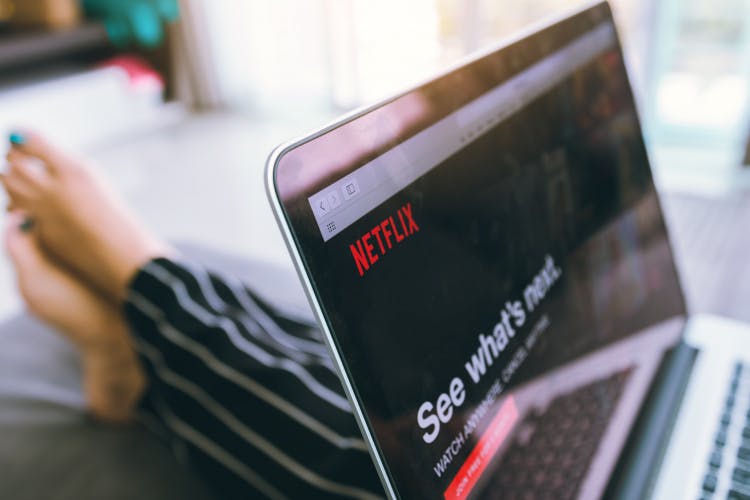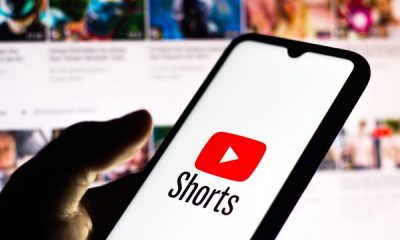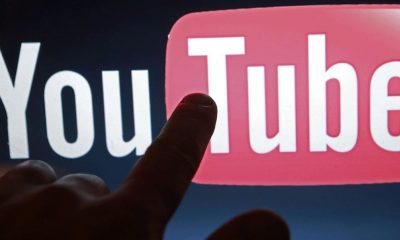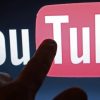INTERNET MARKETING NEWS
The streaming wars will be the bloodiest battle in marketing history
Millennials ask me all the time about what it was like growing up in the 1970s. Actually, no-one has ever asked me that. But it does not stop me from boring the shit out of them with tales from the bygone, be-flared days of 1976 and before. The intrinsic desire to bore younger people with tales from the past grows stronger with every passing year.
One of the best ways to transport people back to the last quarter of the 20th century is to try and describe a typical Saturday morning. You would get out of bed, much as we do now, but then there would be nothing to do. That meant an interminable wait until something came on TV. And by something, I mean anything. And by interminable, I mean endless.
There were only three channels back then. But it felt more like one and a half because much of the time, especially in the mornings, there was literally no content. TV companies had nothing to show, so audiences would get the ‘test card’ instead.
It’s hard to explain to the digital generation what a test card was or the strange, omnipresent role it played in all our lives back then. It was a static image showing a complex pattern that enabled TV shops to tune their sets accurately.
To add a colour test, a bloke from the BBC called George put his daughter Carole in the middle of it playing with a spooky clown. And to ensure the sound on a new TV was working another bloke from the BBC called John, who was a bit of a swinger, chose a soundtrack of upbeat snazzy instrumentals straight out of a bad Lee Marvin movie. These played on a loop for 40 or 50 hours until a programme came on.
The most exciting tales and bloodthirsty storylines are not going to be on the TV set, but behind it.
You want to know what the 1970s were like? Gaze, and then gaze again, at the test card. Try watching the video above for a whole hour and then repeat that experience three more times. That’s what 1978 felt like.
On a whim, anyone over 50 can elicit Carole and her inanimate friend almost instantly because we spent hundreds of fucking hours staring at them both; an army of bored children sat cross-legged with our noses two inches from the screen waiting for Champion the Wonder Horse, Flash Gordon and the future to begin.
Eventually, Channel 4 turned up with a snazzy logo and Channel 5 kicked off. Sky made a huge impact. Apple’s iTunes changed things forever. YouTube moved across to the big screen. BBC evolved its iPlayer and Netflix became the new standard. We now have a ridiculous array of channels that would blow my 10-year-old brain to smithereens.
Disney preps marketing blitz as it takes on Netflix in streaming
Time-shifted viewing and the immediate access to an infinite array of movies ensures that we could each fill a hundred lifetimes with TV viewing if we needed to. The test card seems half a lifetime ago. Mainly because it was.
And popular culture and technology keep rolling forward. You can be sure that somewhere in the UK right now there is an annoyingly extrovert 10-year-old who, in 40 years’ time, will write about the antiquated system whereby you once got out your ‘remote control’ and moved a cursor up and down through the Sky channels to pick a show to watch.
And how you would then put down that remote and look for that ‘fucking Apple controller’ to watch something on that player instead. The last decade has been an amazing one for TV but the pace of change continues.
The second wave of TV disruption
That was the message from Tony Hall last week in his speech at the Royal Television Society. Lord Hall is certain that a second wave of disruption will soon arrive at a TV set near you.
“The second wave will see a range of new entrants entering an already crowded market,” Hall predicted. “We saw it last week as Apple announced its new subscription service. Disney, Hulu and others are set to follow. This is, of course, great for audiences.”
Hall is, as usual, spot on. The first wave of TV disruption saw Sky and then Netflix break the traditional terrestrial monopoly on national eyeballs. There has never been a better time to be hungover, stoned or generally incapacitated. You have immediate access to more content in one day than my 10-year-old self encountered across the whole of the 1970s.
It’s only going to get better and more expansive with the second wave of entrants. But while the viewer is going to enjoy an exponential increase in content, choice and ass numbness, the competing channels vying for that viewer are about to endure one of the bloodiest and most expensive competitive battles in marketing history.
Call it the ‘Streaming Wars’, because that is what they will surely be. Too many channels, spending too much money, offering too much content, while charging too little to make anything other than a gigantic loss. And all in search of an audience a fraction of the size that ITV used to attract with a repeat of Minder.
Even without any new incursions, the battlefield already looks daunting. We already have Sky from £22 a month and Netflix now from £5.99 a month. The terrestrial channels all offer their own streaming options including ITV Hub and BBC iPlayer. Both Amazon with its Prime Video at £7.99 and Google Play from £2.49 a movie also offer streaming content.
Those services alone would be enough to make the next few years competitive, but look who will arrive in 2020. HBO Max will launch with its own streaming content including big hits like Game of Thrones and Westworld, plus the rest of WarnerMedia’s enormous selection of TV and movie titles.
The biggest launch will be Disney+ with a monster library that stretches across the Star Wars, Marvel and Disney back catalogue.
CBS All Access will inevitably arrive, leading with Star Trek and other content offers.
NBCUniversal is likely to launch Peacock, its own streaming service, in the UK at some point too. Hulu – one the few streaming successes elsewhere – is also apparently ready for a move over here.
So, deep breath. We have BBC, ITV, All4, Sky, Virgin Media, Amazon, Google and Netflix already here. We can expect CBS, NBC Universal, Hulu and Apple very soon. It’s not just that I can count a dozen contenders. It’s that these 12 companies are all giants. Most have huge pockets and – the killer point – if they don’t win this war (with the exception of Apple, Amazon and Google) they might as well fall on their swords.
The ‘rule of three’
It is impossible to guess how the battle for British, and global, eyeballs will play out in the streaming wars ahead. But the fantastic work of Jag Sheth and Raj Sisodia certainly provides a very interesting window from which to watch the ensuing melees.
Fifteen years ago, these two authors built on the original work of the consulting firm Boston Consulting Group to suggest that the general ‘rule of three’ applies to most mature categories. Namely, that once all the dust settles most categories invariably become dominated by three mainstream players.
If Sheth and Sisodia are correct, and they usually are, once the initial hostilities in the streaming war settle we can expect three ‘full-line generalists’ to dominant the streaming market. The biggest of the three firms will take 40% of the market, the next 20% and the last one 10%.
The biggest player, the one that ends up with 40% share, will be the least innovative, although it will have the largest R&D budget, which it will use to match and improve on the advances of its two major competitors. The third-placed player will be the most innovative but struggle to grow share. You can observe the rule of three in operation across everything from pizzas (Dominos, Pizza Hut and Pizza Express) to online storage (Dropbox, Google Drive and OneDrive) to terrestrial TV viewing (BBC, ITV and Channel 4).
As the streaming rivals start arming themselves with proven content, the prices for ancient shows have gone bananas.
More interesting is what will happen to everyone else as hostilities wind down and the body count mounts. As the category matures, smaller, niche brands will enter and prosper with tighter targeting, more specific offers and a low single-digit share of the market. Imagine a toddler streaming channel or one dedicated to live rugby union.
Meanwhile, any of the wannabe big players that do not snag a top-three position end up in the insalubrious surroundings of the ‘ditch’. It’s a place in which low relative share cannot support the mass-market aspirations and giant operating costs that go with it. The ditch quite frequently becomes the grave.
I have no idea which of the dozen streaming rivals will make it into the eventual top three. An immediate and highly specious glance at the list would suggest that the BBC (at least in this country) will retain its predominance and be joined by Disney and Apple. Let’s play that scenario out for a moment because it would mean that the likes of ITV, Sky, CBS, NBC, HBO, Virgin and Netflix will all essentially fail and fade from mainstream view.
Maybe Sky will trump the BBC. Perhaps HBO will defeat Apple. Who knows? The point is that, even if the rule of three is only vaguely accurate, there will still be a bloodbath in the streaming wars ahead because no British household has enough money or time to watch all this content. We are already frustrated at having to cycle between Sky, BBC and Netflix to see what is on. Imagine tripling the pain.
And the cost of victory, never mind defeat, is gargantuan. Mere entry into the streaming wars demands gigantically deep pockets and the kind of zen-like comfort with debt exhibited by only global super-villains and CEOs.
BritBox: Is there room for a new streaming brand in the UK?
Remember that through the current, less competitive streaming era Netflix has had to issue a series of junk bonds to stay in business and fund its $15bn annual production costs. That was before most of the real competition even got going and the prices for every remotely good TV show went stratospheric. As the 12 streaming rivals start arming themselves with large amounts of familiar, proven content the prices for ancient old clunking shows have gone bananas.
This week, HBO reportedly shelled out $1bn for the (not even funny) Big Bang Theory just a day after Netflix paid Sony a reported $500m for exclusive rights to Seinfeld. It did that because the channel lost its two most popular shows this year in The Office (bought by NBC for $500m) and Friends (re-acquired for $425m by WarnerMedia).
All 10 series of Friends cost only $1bn to produce. Imagine getting a 50% pay-day some 15 years after a show has ended and generated hundreds of millions in profits from its original run, international sales and subsequent syndication. It would be liking winning five hundred quid on the 4:15 from Kempton back in 1984 and someone knocking on your door last week and giving you another 200 quid just for the hell of it.
That’s just the current price war. Most of these streaming services have not even launched yet. Imagine the battles ahead as the 12 rivals battle for the same audience, all fully aware that there simply is not enough economic or temporal room for more than a third of them.
So sit back, grab the popcorn and enjoy what will surely prove to be the most competitive commercial contest in marketing history. For the next few years the most exciting tales and bloodthirsty storylines are not going to be on the TV set, but behind it.













